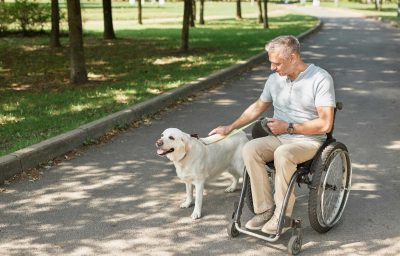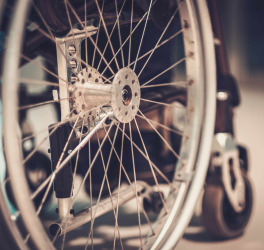
There was little change in unemployment in October for people with and without disabilities, according to today’s National Trends in Disability Employment (nTIDE) COVID Update. The overall jobs picture remained steady, as reported in the nTIDE October Job Report released earlier this month.
“In our November 4 nTIDE, we reported the ongoing strength of the labor market for people with disabilities, but questioned how long this would last given the current economic climate,” said Andrew Houtenville, PhD, professor of economics at the University of Hampshire (UNH) and research director of the UNH Institute on Disability. “Looking closely at the unemployment graphics today, we see very small increases in furloughs for both people with and without disabilities. While these changes are slight, they are noteworthy in the context of the ongoing efforts of the Federal Reserve to control inflation.”
“We are seeing the beginnings of major layoffs in the tech sector, which could be a sign of more to come if recession continues to remain a concern,” Dr. Houtenville added, referring to news from large companies such as Meta and Twitter. “This could be an early sign of an impact on unemployment, especially if we start to see layoffs in other sectors,” he said.
As economic recovery continues in New York City, businesses are adapting to the effects of the pandemic on the workplace. While workers with disabilities are being welcomed back to their jobs, the nature of many positions is changing, according to nTIDE co-author John O’Neill, PhD, director of the Center for Employment and Disability Employment Research at Kessler Foundation. Dr. O’Neill also serves on the board of Job Path NYC, a nonprofit that provides customized employment services for people with intellectual and developmental disabilities.
“As offices reopen, the boom in pandemic-related jobs has declined. The need for extra cleaning services has evaporated, for example, as well as the need for COVID screening services. Today, many offices are transitioning to hybrid work, so employers and job developers are adapting customized positions to accommodate this new model,” he explained. “Other job settings are also adapting their position requirements, which means new niches for customized employment, but requires more time to set up the supports for returning workers.”
Monitoring the National Trends in Disability Employment helps us track the impact of economic shifts on people with disabilities. As the impact of the COVID-19 pandemic continues to wane, the impact of inflation continues to rise. In 2023, the nTIDE team plans to transition the COVID Update to a ‘deeper dive’ into the Bureau of Labor Statistics data for people with disabilities.








